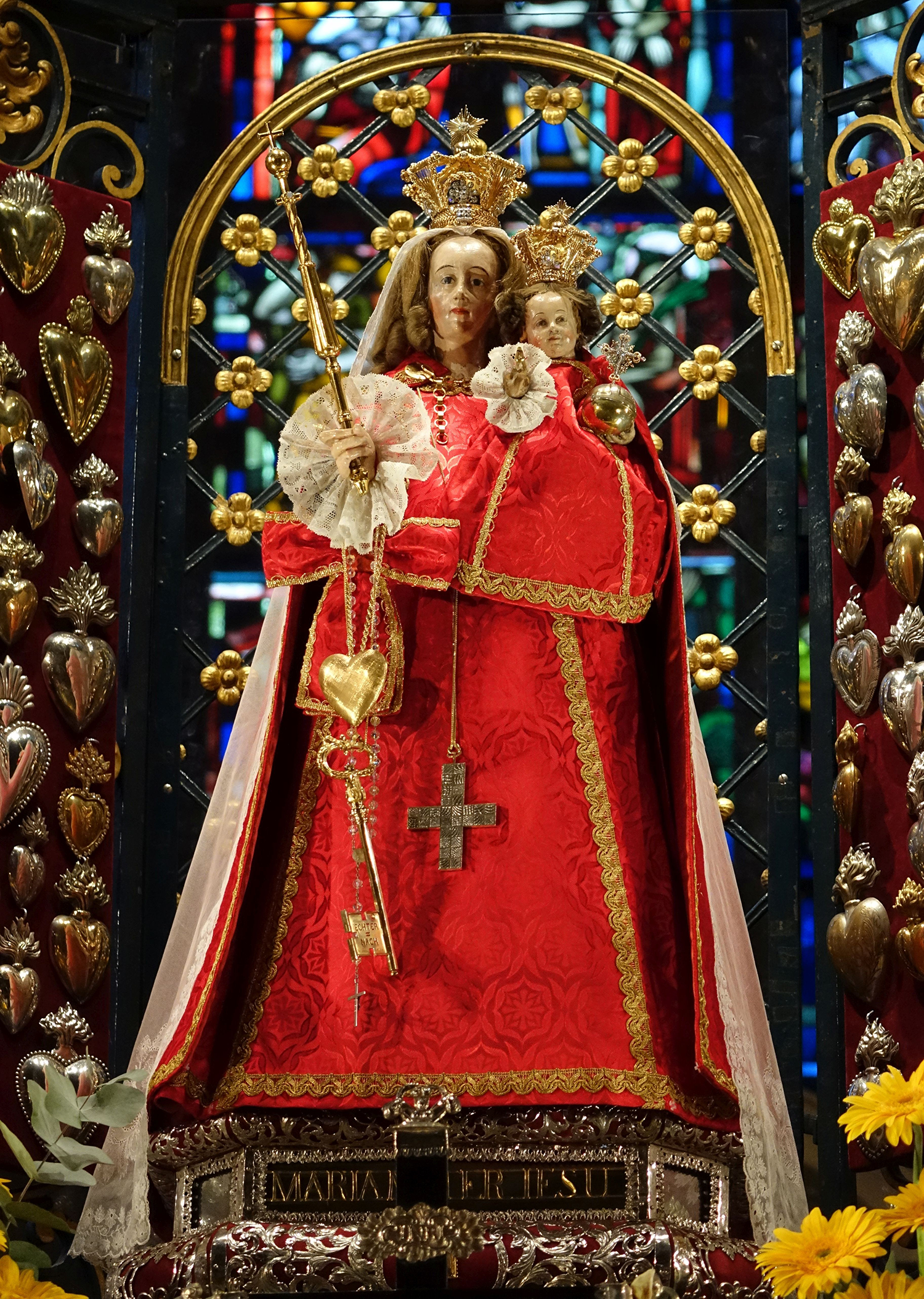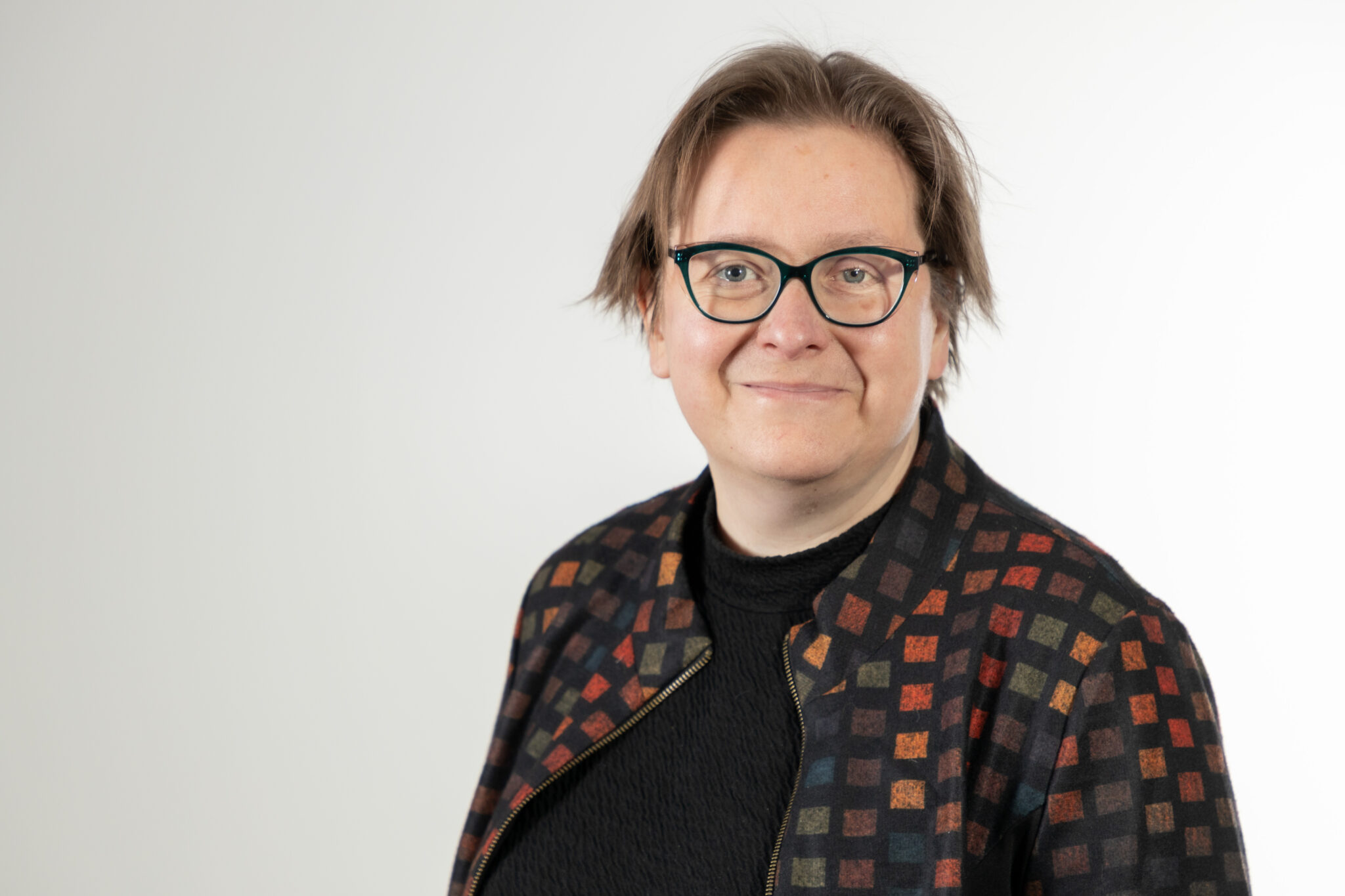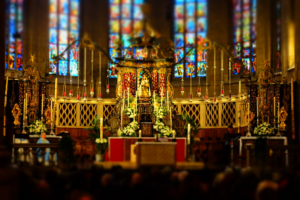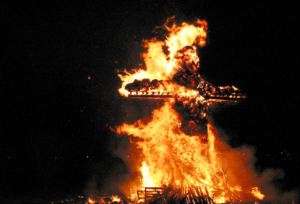In Luxembourg City, visitors will no doubt have noticed the arrival of stands selling food and religious objects on the Place de la Constitution, at the bottom of the famous Gëlle Fra. These stalls form the Mäertchen, a market dedicated to pilgrims of the Octave, which is organised from 20 April to 5 May.
Professor in Early Modern History Monique Weis sheds some light on this tradition.
The Octave celebrates its 400th anniversary this year. Where did this pilgrimage to Notre-Dame de Luxembourg originate?
“The first traces of this pilgrimage date back to 1624. At that time, the Jesuits had settled in Luxembourg, which was then part of the Spanish Netherlands. As part of the Catholic Counter-Reformation, they were promoting new forms of veneration, in particular Marian pilgrimages. Father Jacques Broquart had a wooden statue of the Virgin installed against a backdrop of plague epidemics. He encouraged pilgrimages to this so-called miraculous statue. It stood in a chapel on what we know today as the Glacis. This was the most vulnerable side of the town, as it had no natural protection and the fortifications were less developed than elsewhere. During the annual pilgrimage, which gradually developed and took the name of Octave, the statue was moved to the centre of the city, in the Jesuit church that is now Luxembourg Cathedral.”

Statue of Notre-Dame de Luxembourg © Archdiocese of Luxembourg
How did the tradition become established?
“Stories of the miraculous began to spread, thanks in particular to the Livre des Miracles (1640) attributed to Broquard. These accounts of healing attracted pilgrims from Luxembourg and further away. But the pilgrimage to Notre-Dame de Luxembourg, the “Consoler of the Afflicted”, also owed its success to the support of the political authorities. In 1666, the Virgin was proclaimed patron saint of the city. And in 1678, the entire Duchy of Luxembourg (and the County of Chiny) was placed under the protection of Notre-Dame de Luxembourg.”
What distinguishes the Octave from other pilgrimages?
“It’s a pilgrimage that is limited in time. As its name suggests, the Octave originally lasted eight days. It now lasts a fortnight. The statue can be seen all year round in the Cathedral of Notre-Dame de Luxembourg, but its official pilgrimage takes place between the 3rd and 5th week after Easter. This year, this corresponds with the period between 20 April and 5 May.”
Where do the Octave pilgrims come from today?
“It’s a national and regional pilgrimage. It attracts pilgrims from all over the Grand Duchy, and some still come on foot. Groups from the diocese of Metz, southern Belgium and the Bitburg region also take part in the Octave. One of the reasons for this is that some of these regions were once part of the Duchy of Luxembourg. With around 80,000 participants, the Octave is Luxembourg’s biggest religious event. Masses, prayers, vigils, meetings, etc. are organised over a two-week period. But the highlight is undoubtedly the final procession. Its importance obviously depends on the temporary nature of the Octave. The pilgrimage has an end, and it’s a climax that’s both solemn and festive. The statue of the Virgin is carried through the streets of the capital; it is a moment of affirmation for the Catholic community and its various components.”
But this procession is also marked by the presence of representatives of the Grand Ducal Household, the City of Luxembourg and other public institutions. Why is this?
“We can see this as a vestige of the interweaving of politics and religion that existed when the Octave was created. But the pilgrimage has changed a great deal over the course of history. At the end of the 18th century, it was abolished and the Glacis chapel destroyed. The tradition was revived under Napoleon. Since the 19th century, the statue has been kept in Notre-Dame de Luxembourg Cathedral. During the Second World War, the pilgrimage was banned. The statue became a symbol of Luxembourg’s resistance against the occupying forces. Once the war was over, the Octave was revived. In many people’s minds, two women protected Luxembourg during this period: the “Consoler of the Afflicted” and Grand Duchess Charlotte.”
In 2021, you published a reflection in a religious studies blog on the evolution of the Octave in the context of the health crisis, when the pilgrimage was organised in hybrid mode. What is the situation today?
“In 2021, the theme of the Octave was ‘Suddenly, nothing is the same’. This phrase from the Bible was well chosen in this very particular and destabilising context. That same year, a woman was appointed as the official preacher of the Octave for the first time. Today, the event is organised live once again, but there is still a livestream, which is a sort of remnant of the Covid. The continuing success of pilgrimages can be attributed to the fact that they offer an experience that is both religious and secular, personal and collective. This multi-dimensional reality is difficult to transpose into the virtual world.”

Photo at the top: © SCP Gerard Kieffer

